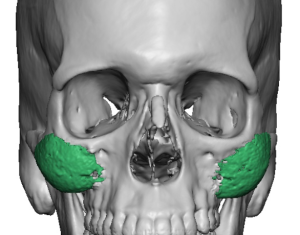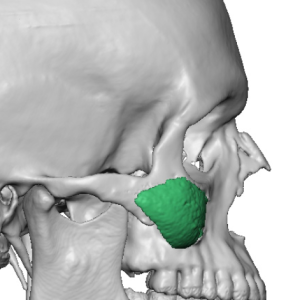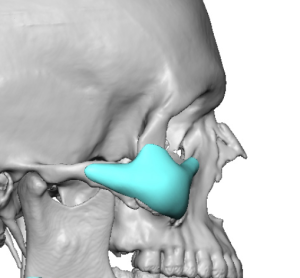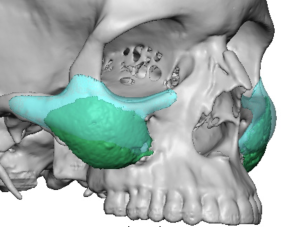Background: Standard cheek implants have their role in many modest forms of cheek flattening but were never designed to treat a more complete midface deficiency. The more extensive the midface deficiency is the more its effects are seen around the eye. Undereye hollows and pseudoproptosis (bulging off the eye) are the hallmarks of a more complete midface deficiency which extends to involve the lower orbital bones as well.
There are various procedures to augment the lower midface from a LeFort I osteotomy to nasal base-maxillary implants. But when it comes to the upper midface, there are no bone moving procedures that most patients are willing to undergo that would improve the upper maxillary-infraorbital-cheek deficiency. Most patients are not going to undergo a modified LeFort III procedure which would be helpful although still inadequate for an optimal combined infraorbital and cheek augmentation effect.
For the upper midface the only standard implants that are available for augmentation are cheek and tear trough implants. But, as previously mentioned, they were designed for ‘spot’ augmentations for more common aesthetic needs and not to increase a larger area of bony deficiency. The broader and more multidimensional the midface deficiency is the more the need for a custom implant design becomes.
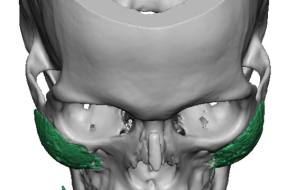
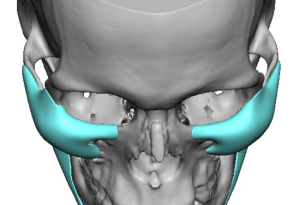

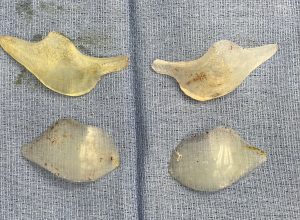
With some additional pocket dissection the new custom IOM-cheek implants were placed, which while looking enormous on the outside, did not look that way when implanted.
In fact the midface still looked a bit deficient. So his existing removed cheek implants were modified and placed back as overlays on top of the new custom implants and secured by screws placed through both implants to the bone.

Case Highlights:
1) Standard cheek implants are not a good method when mid facial hypoplasia is more complete. (involves the infraorbital rim)
2) Saddling of the infraorbital rim as well as extending along the lateral orbital rim provides augmentation vertically which helps support more horizontal augmentation of the deficient midface.
3) A higher midface augmentation requires a lower eyelid approach for proper implant placement.
Dr. Barry Eppley
Indianapolis, Indiana




